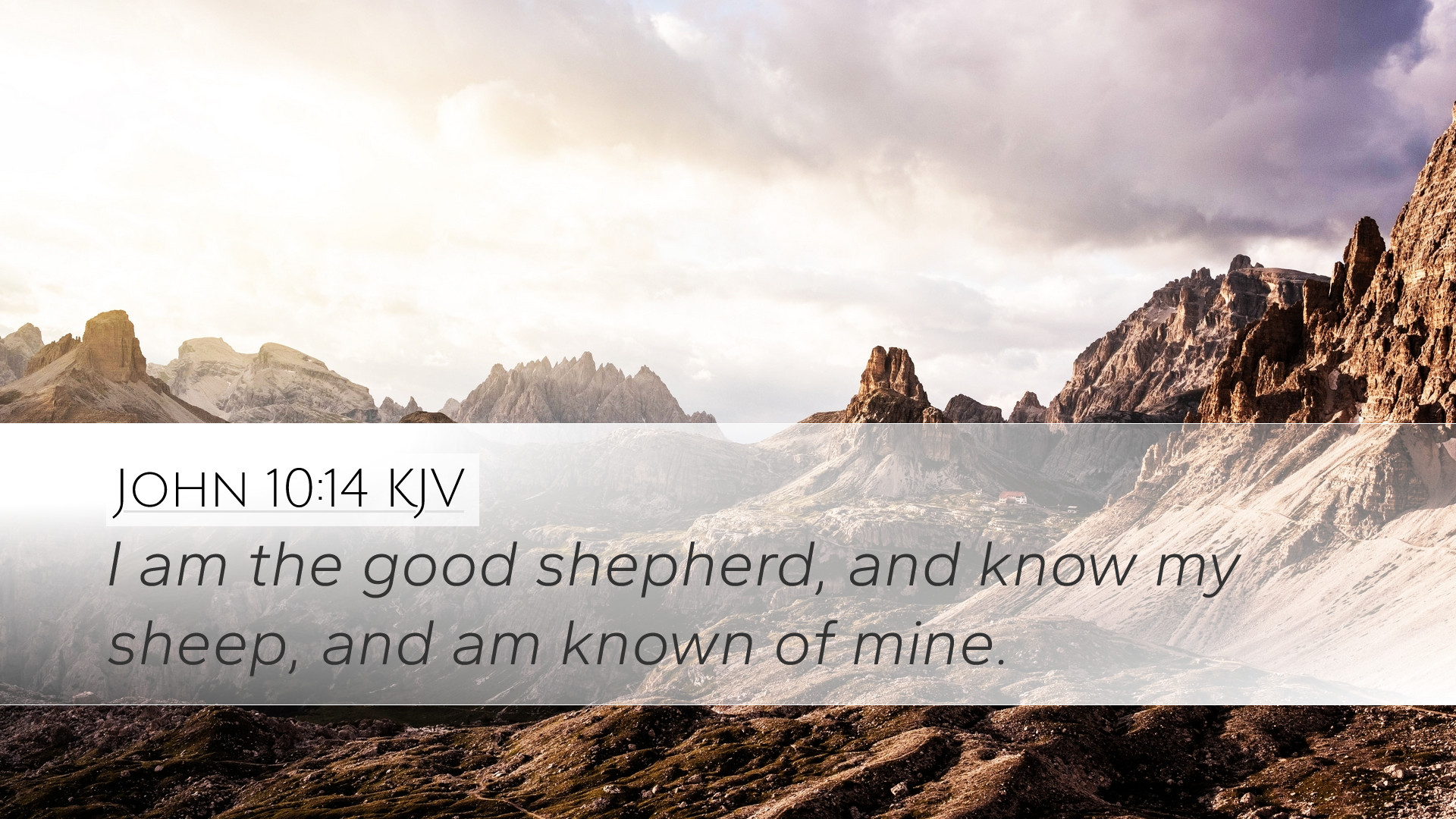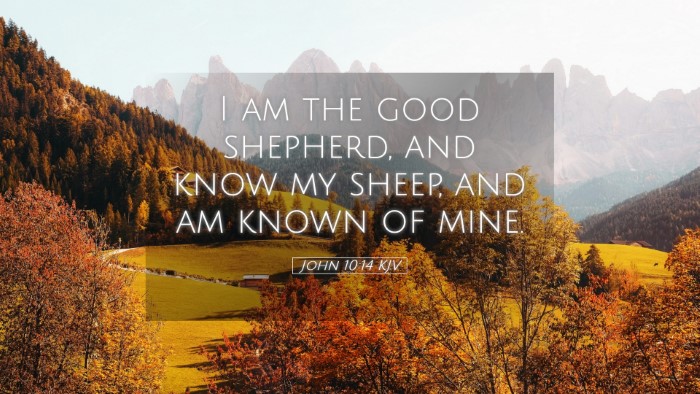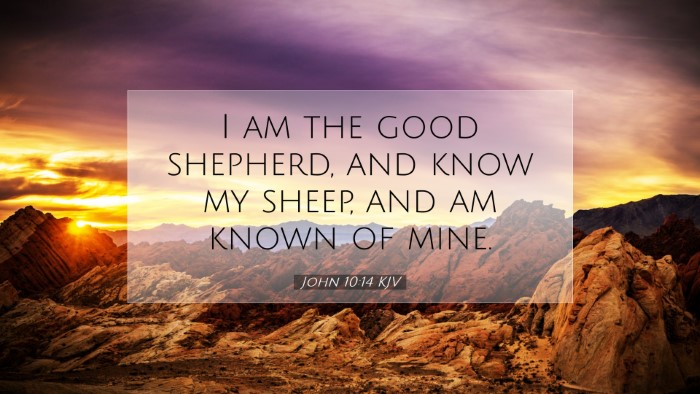Commentary on John 10:14
John 10:14 (KJV): "I am the good shepherd, and know my sheep, and am known of mine."
Introduction
The verse John 10:14 encapsulates one of the most profound images in the biblical narrative: that of Christ as the Good Shepherd. This identity not only highlights the care and love that Jesus has for His followers, but also establishes a dynamic relationship between the shepherd and his sheep. The insights drawn from noted public domain commentaries provide a multi-faceted understanding of this verse, exploring theological, pastoral, and practical implications.
The Nature of the Good Shepherd
1. Christ's Self-Identification
In this statement, Jesus refers to Himself as the "Good Shepherd." Matthew Henry emphasizes that this is a declaration of His role and mission. Unlike hired hands who abandon the sheep in danger, the Good Shepherd lays down His life for them, demonstrating ultimate devotion and commitment (Henry, John 10:11-15).
2. Knowledge of the Sheep
Albert Barnes expounds on the depth of knowledge that the Good Shepherd has of His sheep. This relationship goes beyond mere acquaintance; it is an intimate knowledge where the shepherd understands the needs, fears, and vulnerabilities of each sheep. Jesus knows each of His followers deeply and personally, which assures them of His constant awareness and care.
3. Mutual Recognition
The phrase "and am known of mine" signifies a reciprocal relationship. Adam Clarke points out that this mutual recognition emphasizes the sheep's understanding of their shepherd's voice. Jesus' followers are called to recognize and respond to Him, suggesting a profound spiritual dynamic where understanding the Good Shepherd leads to the right relational response from the sheep (Clarke, John 10:14).
Theological Implications
John 10:14 presents several theological insights central to the Christian faith.
- The Incarnation of Christ: Jesus' reference to Himself as the Good Shepherd highlights His incarnation. He came to dwell among humanity to provide guidance and salvation, which is essential in understanding His humanity and divinity (Henry, John 10:14).
- The Atonement: The Good Shepherd's commitment to lay down His life speaks directly to the doctrine of atonement. This sacrificial love is foundational in Christian theology, offering a means of redemption and showcasing God's love for sinners (Barnes, John 10:15).
- Sovereignty and Grace: The verse encourages believers to recognize God's sovereignty in His relationship with the sheep. His choice of selecting them and the grace extended to them in knowing Him encapsulates a core tenet in Reformed theology (Clarke, John 10:14).
Pastoral Applications
This verse provides rich material for pastoral reflection and application, particularly regarding church leadership and care.
- Shepherding in Ministry: Pastors are called to emulate Christ, the Good Shepherd, by providing care, guidance, and support to their congregation. They must be willing to know their members deeply and respond to their needs with compassion and integrity (Henry, John 10:16).
- Creating a Safe Community: The church, as the body of Christ, should reflect the safety that comes from being under the Good Shepherd's care. Believers should feel secure in reaching out for help and support within their church family (Barnes, John 10:14-15).
- Encouragement for the Undershepherds: Pastors and church leaders must remind themselves that they are under-shepherds serving the ultimate Good Shepherd, offering guidance based on His teachings (Clarke, John 10:15).
Conclusion
John 10:14 stands as a profound statement of Christ's identity and His relationship with His followers. Drawing from insights from public domain commentaries, we can appreciate the depth of meanings embedded within this verse. The Good Shepherd not only provides protection and care but also invites His sheep into a deep, personal relationship. The implications of this verse extend the invitation to all believers to know Him and be known by Him. As Christ's followers seek to embody this shepherding model, they can find assurance and purpose in their respective callings—one that echoes the heart of the ultimate Good Shepherd.


